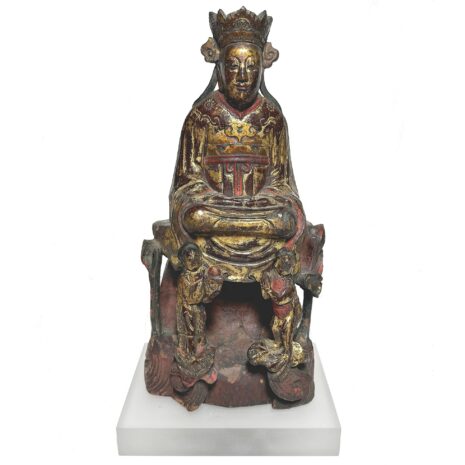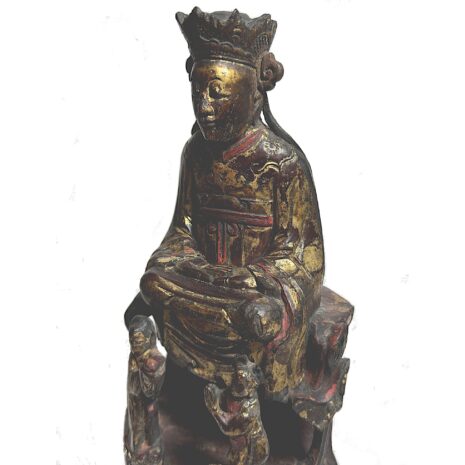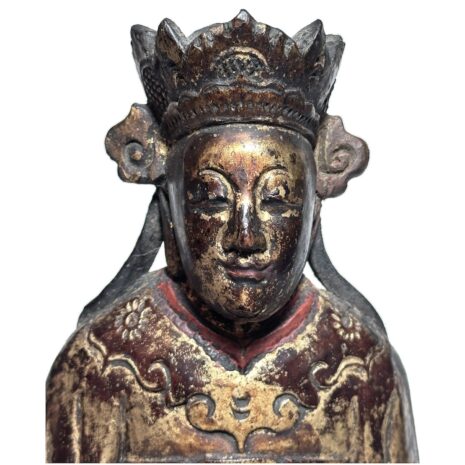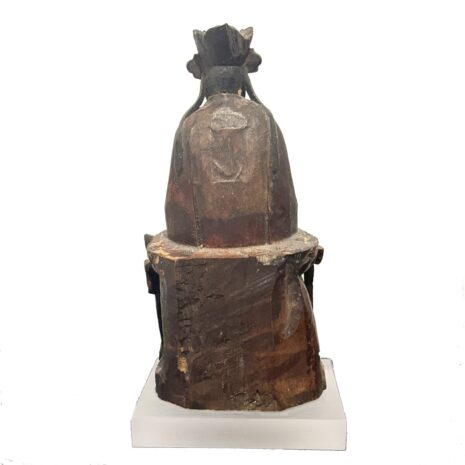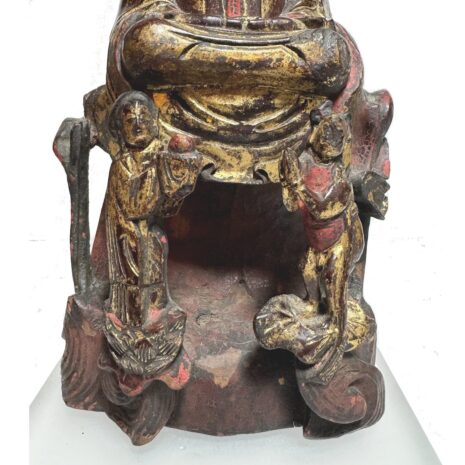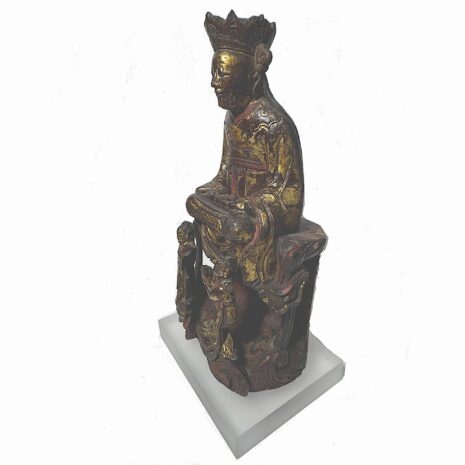Antique Nanhai Guanyin with 2 Acolytes on Putuo, China (16240)
Original price was: $1,350.00.$1,200.00Current price is: $1,200.00.
H: 11.5″ W: 6″ D: 4.5″ | FREE SHIPPING IN CONTINENTAL U.S.
Nanhai Guanyin on Mount Putuo sits as a triad with acolytes Shan Tsai hands in prayer and the Dragon Princess offering the “illuminating pearl.” Very rare Ming sculpture on an Acrylic base is one of our favorites VA collection carvings.
Description
This delicate antique carving is Nanhai Guanyin of the South Sea, a popular manifestation created during the Ming and Qing Dynasties which experienced a revival of Buddhism and Buddhist art. Guanyin cults appeared throughout China along with new Guanyin temples. Her status among followers of Buddhism, Taoism, Confucianism and Popular Religions all social classes was fueled by popular literature and folk tales emphasizing her Chinese “heritage”. Mount Putuo (Putuoshan) in the China Sea became the pilgrimage center for Guanyin worship where Nanhai Guanyin became her new authorized iconographical manifestation. She was often portrayed as a triad with two young attendants, Shan Tsai (Sudhana in Sanskrit) with hands in prayer (anjali mudra) and bent knees showing he was once disabled on Guanyin’s right and the Dragon Princess Longnu (Longnü) offering her the “illuminating pearl” on her left. Shan Tsai was a disabled pilgrim who visited 53 teachers to study Buddhist Dharma. He visited Guanyin at Putuo who tested his resolve by creating the illusion of pirates threatening her life. Shan Tsai chased them off a cliff and Guanyin saved him, restored his disability, taught him the Dharma and made him her permanent acolyte attendant. Guanyin saved the Dragon King’s son’ life, in gratitude he had his daughter give Guanyin a night-illuminating pearl to read sutras in darkness. She sits on a rocky outcrop on Putuo in meditation (dhyana mudra) wearing a five-lobed double-tiered crown. She sits on a lotus throne held up by lotus stems with closed lotuses, while Longnu stands on a the tiered lotus and the Shan Tsai on an open lotus leaf. The rear cavity is sealed with its original cover indicating it was consecrated . The masterful carving and its intricate presentation with gilt and lacquer coating suggest it was commissioned for a wealthy devotee’s home altar. On an Acrylic base.
Click here for Consecrating Wooden Images to Imbue Them with A Life Force.
This piece is featured in a VA Instagram post.
Additional information
| Dimensions | 16 × 12 × 8 in |
|---|---|
| Place of Origin | China |
| Period | Antique, Ming/Qing Dynasties |
| Date | 17-18th Century |
| Materials and Technique | Wood |
| Dimensions (inches) | Ht: 11.5” W: 6” D: 4.5” |
| Dimensions (metric) | Ht: 29.21cm W: 15.24cm D: 11.43cm |
| Item Number | 16240 |
| Condition | Excellent, age appropriate signs of wear |
| Shipping Box Size |

